2013 Mazda CX-5 Review – Video

There are a select few crossovers or SUVs that can perform on a racetrack. For the most part, they come from German automakers and cost just shy of six figures.
FAST FACTS
| 1. Using the modified 2.0L Skyactiv engine from the Mazda3, it makes 155 hp and 150 lb-ft of torque, with more power down low. |
| 2. With class-leading highway fuel economy, the CX-5 is rated at 26/35 mpg for the manual front-drive model and 26/32 for the automatic. |
| 3. Pricing starts at $20,695 with $22,095 for the automatic. AWD models start at $23,345. |
With the introduction of the CX-5, Mazda is claiming to join such prestigious company – for a little over $20,000. Sure, it doesn’t make 500 hp, use ultra high performance tires or a sophisticated AWD system. And yet, it’s a crossover built for drivers.
On track at Laguna Seca, Mazda’s very own raceway, the car’s performance credentials shine.
PROPER DRIVING DYNAMICS
It is no race car and once you begin the climb to turn six the engine may scream, but the revs barely rise, as the incline and that fact that the engine does displace just 2.0-liters factor in. While slight, the vantage point to best execute the famed corkscrew is better, but the feeling of weightlessness as you crest the hill is amplified.
That corner may get all the fame, but it’s the following turn 9 that delivers terrifying thrills. The raised ride height will have you feeling like you’re sliding sideways across the road like an unwilling passenger in an avalanche. Stay on it, however, and the car will respond with confidence.
Get the Flash Player to see this player.
Mazda claims that for much of the track it will run fender-to-fender with a Mazda3, the result of extensive attention not just to the handling, but to the steering, giving drivers the confidence to push the limits of this compact crossover much further.
The secret, says Mazda vehicle development engineer Dave Coleman, is plenty of caster, more even than the RX-8, giving that amazing steering feel. “Everyone says their sports car informed the steering and handling on the rest of their cars. We tell you how,” he says.
Even the car’s platform is responsible for its characteristics, with new mounting points for the uniquely designed suspension on an all-new structure. The CX-5 is, after all, the very first Mazda product to employ the full suite of Skyactiv technologies.
The new engineering principles combined with its relatively compact size and weight make it chuckable too. With a curb weight of 3,200 lbs, it’s almost 300 lbs less than a CX-7 at its lightest, and fully loaded nearly 600 lbs lighter.
MORE TORQUE FOR SKYACTIV ENGINE
In addition to the new Skyactiv components, the Mazda CX-5 makes uses of the same 2.0-liter 4-cylinder introduced in the 2012 Mazda3. While a stop-gap measure for the 3, here is where that engine was designed to be, with a wild-looking new header that allows the engine to operate at a 13:1 compression ratio – the highest of any production engine available.
Total power is rated the same at 155 hp and torque rises just two lb-ft to 150, but it’s the rest of the torque curve that’s important. In particular, there’s significantly more torque from 2500 to 4000 rpm.
Impressive as this all is, unfortunately for Mazda, we expect no less. That’s the curse of being the zoom-zoom brand.
SPACIOUS AND FUNCTIONAL
What is perhaps more remarkable is that the CX-5 is spacious and versatile with plenty of cargo room, rear seat room, exceptional fuel economy and an attractive price.
The car’s ergonomics are good and all of the interior controls are simple and easy to use – a result of Mazda’s willful (or unwilling) behind-the-times approach to in car telematics. You won’t find confusing display screens here with techy sounding MyLink-Touch-Pad names, just simple controls. In fact, while a bit rudimentary in terms of its design, Mazda has teamed up with TomTom for a new navigation system that’s blissfully easy to use. On the down side, Bluetooth isn’t standard, though it can be added on in a basic $400 package.
As for the rest of the cabin, it’s much less of a leap forward than the car’s underlying engineering, or even the new style (the MX-5 being the first model to employ Mazda’s new Kodo design language). Thankfully, Mazda has been ahead of its rivals for a decade when it comes to interior trim components and design, so even now it’s quality stuff.
Looking quite small in pictures, it’s larger in real life and despite the sporty brand image, the CX-5 doesn’t compromise on space. The rear seat area is plenty spacious for adults and the cargo area is 34 cu-ft, though looks like more with plenty of depth. Drop the rear seats and you’ve got 65 cu-ft of space. Of note is the versatility of the optional 40/20/40 folding rear seats (60/40 standard), which allows you to slide longer objects though while still keeping two spots for passengers. And if you prefer to haul items behind, the Mazda CX-5 gets a 2,000 lb tow rating.
PERFECTION? NOT QUITE.
While track driving will deliver plenty of thrills, it’s on the street where almost all (if not every) CX-5 will bide its time. A solid rush of power when you hammer on the throttle, driven more leisurely it’s a dog off the line. Thankfully, the mid-range torque kicks in quickly.
It’s a calm smooth drive on the highway, although rougher roads will reveal the car’s more stiffly sprung suspension. Quiet when cruising, engine noise when accelerating is more than a few decibels louder than it should be.
Two wheel options are available, with 17-inchers on the base models and an optional 19-inch package. Tire width doesn’t change between the two at 225, although the 19s do use a lower profile. When driven hard the 19s show their advantages and we didn’t notice much drawback in terms of ride quality. Steering feel with the 19s was better too.
Unfortunately, just as you can’t get the 6-speed manual with AWD, the 19s can’t be had with anything but AWD.
Visibility out the front is excellent, thanks to a massive windscreen. The view out the back is also solid, despite the sloped rear of the crossover. Mazda does also offer blind spot monitoring and a back-up camera as options.
In terms of every day driving, an important test for the CX-5’s automatic transmission comes on the steep hills around Monterey. Essentially the same unit found in the Mazda3, we complained about its unwillingness to drop gears with modest throttle application when we tested it a few months back. The CX-5 exhibits similar traits, though it’s not as unwilling.
FUEL-EFFICIENT, PRICED RIGHT
This, of course, is all in an effort to deliver maximum fuel economy, a category where the Mazda CX-5 excels. Ranked with a class-leading 35 mpg highway with the six-speed manual, it gets 32 miles per gallon on the automatic and both get 26 mpg city. As for all-wheel drive models, they’re rated at 25/31 mpg.
Starting at a low $20,695 for a front-drive model, adding an automatic transmission will bring the price to $22,095. Three trim levels (Sport, Touring and Grand Touring) are available with heightened content offerings and optional goodies like navigation, bi-xenon headlights and keyless access with a push button ignition. All-wheel drive models start at $23,345 and top out at $28,295.
THE VERDICT
With the strong focus on driving enjoyment, Mazda is targeting the CX-5 at younger buyers and couples in their pre family life stage. That said, knowing Mazda’s history and the fact that the company name proudly sits on one of the world’s most famous race tracks, it’s perhaps less surprising that it can nail an apex than the fact that it’s a solid well-rounded compact crossover.
So why put this heightened focus on driving dynamics into a crossover? Apart from being the Mazda way of doing things, there are two other good reasons, explains Coleman. First, he believes that, “the best safety system a car can have is the ability to not get into a crash,” and second, “not everyone who has kids and takes them to soccer hates driving.”
In a segment defined by compromises, Mazda bills the CX-5 as a no compromise vehicle. That’s never true of any car, but with this compact crossover it’s certainly less of a stretch.
Related Reading
2012 Honda CR-V Review
2012 Kia Sportage Review
2011 Hyundai Tucson Review
2011 Toyota RAV4 Review
LOVE IT
- Exceptional handling
- Great fuel economy
- Plenty of passenger and cargo room
LEAVE IT
- Automatic transmission still doesn’t like downshifting
- Engine noise a bit excessive
- Could use more power
- Bluetooth not standard

With AutoGuide from its launch, Colum previously acted as Editor-in-Chief of Modified Luxury & Exotics magazine where he became a certifiable car snob driving supercars like the Koenigsegg CCX and racing down the autobahn in anything over 500 hp. He has won numerous automotive journalism awards including the Best Video Journalism Award in 2014 and 2015 from the Automotive Journalists Association of Canada (AJAC). Colum founded Geared Content Studios, VerticalScope's in-house branded content division and works to find ways to integrate brands organically into content.
More by Colum Wood
















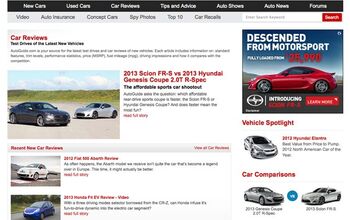

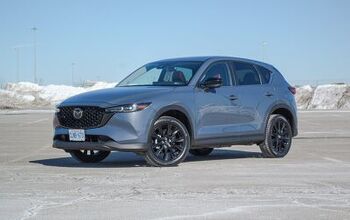
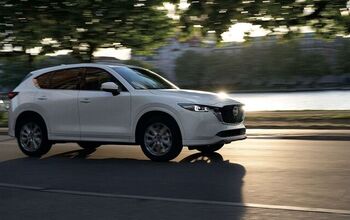




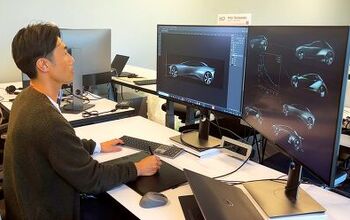
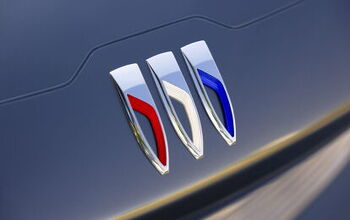



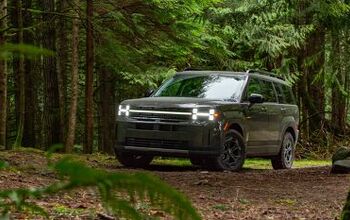
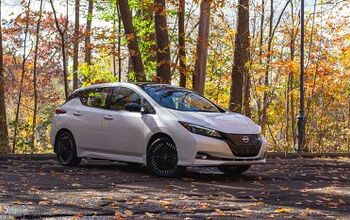
Comments
Join the conversation
hate the fact that the lock buttons do not light up and I have to open the door to see them!